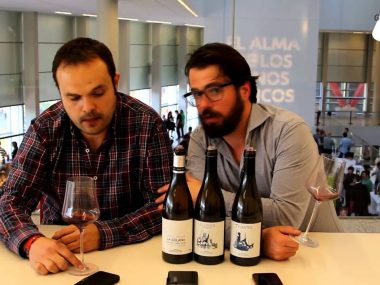The Xarel.lo grape, also known as Charelo, is a grape which, although it is mainly found in Catalonia, is nowadays a variety grown in the DO Penedés and in the Campo de Tarragona.
Charelo is, together with Macabeo and Parellada, one of the varieties used to produce cava. It is a grape that is the product of a cross between gibyand brustiano faux . It is characterised by being of medium strength and is adaptable to different terrains. It also has a good productivity with favourable climatic conditions.
The grapes are medium sized and usually weigh between 300 and 350 grams. It is positioned with the number 13.270 in the Vitis International Variety Catalogue (VIVC), which corresponds to a database where several species and varieties of the genus Vitis participate. This type of grape was named for the first time in 1785 in Sitges in a lease contract of “la torre de Sitges”.
If you still don’t know the characteristics of this delicious grape variety, we invite you to continue reading.
Characteristics of Xarel.lo
The Charelo grape is also known as cartoixa, cartuja, catuxa, moll, pansa, pansa blanca, pansal, pansalat and pansalet, among other names. It is a species that adapts to warm, dry climates and its vegetative cycle works best between 0 and 400 metres above sea level.
The vine is erect and sprouts slowly, making it resistant to possible late spring frosts. Its clusters are medium-sized and compact and its fruit is sweet, medium to large in size, amber-yellow in colour, turning dark golden on ripening and with thick, consistent skin.
The vines of this grape are characterised by their drooping shape, with many rather thick branches. They bud break or swelling occurs early, compared to vines of other grapes, whose bud break coincides with the beginning of spring.
They are susceptible to bud break, but it can be managed with good pruning, leaving some of them long. Another particular feature is that leaf removal is necessary to maintain a healthy and homogeneous ripening of the clusters.
Nevertheless, this variety is very sensitive to diseases such as mildew, powdery mildew and botrytis, as it has compact bunches. It is also sensitive to moth and mite attacks. Another of its characteristics is that it is very resistant to wind, high temperatures and drought and it adapts very well to different types of soil.
The Charelo wine
The Xarel.lo grape produces wines whose characteristics are highly appreciated by winegrowers and consumers. Its musts are usually very acidic and high in sugar, with fruity aromas on ripening.
Its young wines are quite smooth, with a silky character, but with body, good acidity, fruity aromas and excellent alcohol content. Its aged wines are subjected to oak ageing, so they gain structure with more complex sensory characters, toasted, strong and even spicy aromas.
This variety is used in the production of sparkling wines such as cava, which are used in renowned wineries such as those that cover the Penedés DO. It is usually blended in a coupage in which other white grape varieties such as Parellada, Macabeo or Chardonnay participate, giving the cava body, structure and acidity.
Nowadays, old vines are being recovered to make 100% Xarel.lo white wines, and to achieve balanced, dry, structured, full-bodied crianza wines with an acidity that gives them freshness and complex aromas. Some oenologists and winemakers have even shown that, with good work in the vineyard and cellars, these grapes can create very interesting wines, balanced, consistent, aromatic, silky and very rich in flavour.
The tasting
In the first phase of the tasting, which is the visual phase, these wines stand out for their golden yellow colour with greenish reflections. Then, in the olfactory phase, we can say that it is an intense wine. Fruity aromas predominate, resembling stone fruit, pear, apricot, loquat, and also citrus fruits such as lime and lemon peel.
The taste phase provides important information about the wine. In the mouth it is pleasant, a little oily, with notes of citrus, grapefruit and a little bitter. But it also has good acidity and a pleasant and intense finish.
Wines with this variety go perfectly with soft cheeses, fish and seafood. Some of the preferred choices are tuna, sardines, herring, salmon, mussels, paellas, rice and pasta dishes, cooked or stewed vegetables, pork and chicken.
Types of Xarel.lo wine
There are currently a wide variety of wines made from this grape on the market, among which we can name the following:
- Xarel.lo Curiós, a young wine par excellence. It is fresh, fruity and with a good acidity. It is ideal for drinking by the glass, as an aperitif or with oysters, seafood and paellas.
- Xarel.lo El Fanio, a wine made with 100% grapes from the El Fanio vineyard. It is aged for 8 months in acacia barrels, with a very silky, elegant and long-lasting profile in the mouth.
- Efecto Ancestral is a sparkling wine made following the original method, without sulphites or added sugars. A rustic wine with a bitter and rich finish.
- Xarel.lo Ovum, a white wine made from 100% Xarel.lo, extracted from a family estate.
- Recaredo Terrers Brut Nature 2018, a superior cava wine. Totally dry, gentle, ripe and smooth at the same time. Partly aged in oak barrels which adds floral notes, fresh aromas and a subtly smoky flavour.






